Cutting Away Your BASE Gear
BASE canopies, generally speaking, don’t get cut away in the case of a malfunction. But there are instances when we do want to get away from our canopy, and/or all of our gear, in a hurry. The emergency could be life-threatening, or perhaps freedom-threatening, and sometimes you really just “gotta go”. It’s good to have a plan to get away from your gear…
What type of Risers?
The two most common types of BASE harness-container systems integrate with the canopy via Sewn / “Integrated” risers, or 3-Rings. Other modes exist, but generally your harness (risers) fit into one of two categories: Quick-Release, or Not.
We previously discussed the limitations of 3-Ring systems in BASE, in this article, which we recommend reading first if you’re using, or considering, a 3-Ring system.

The comparison mainly boils down to simplicity vs convenience. Sewn in risers are stronger, but not as easy to cut away. For example, the Dyneema-blend webbing used in the Crux and Stream harnesses has a breaking strength of over 7,000 lbs, and you get two per side, while most Type-8 3-Ring risers will fail in the range of 4,500-5,000 lbs max, when new.
If you’ve chosen sewn risers, then the plan for getting away from your gear when you need to, is a good hook knife.
Where to Cut?
But it’s not as simple as just cutting things. A common discussion point in BASE is “where to cut your gear” in the event of an emergency. One of the most common life-threatening emergencies is a water landing, particularly if the water is moving, or very cold. In that situation, it is imperative that you separate or extricate yourself from your gear with speed and precision. We have heard many BASE jumpers say, “Cut your soft links”, usually because gear is expensive and soft links are “soft”.
But soft links are tough little buggers. Made from braided high-strength Dyneema (Spectra), they are not easy to cut – even with a good hook knife, even under tension. Secondly, there are 4 of them. Located at the very end of your risers, they can feel rather distant, at times. Also, they’re not large targets! The sweet spot, located on just one side of the riser and in-between the lines and the riser webbing, is less than an inch wide. Finally, some hook knives don’t even have a wide enough mouth to attack an assembled soft link – check before you try.
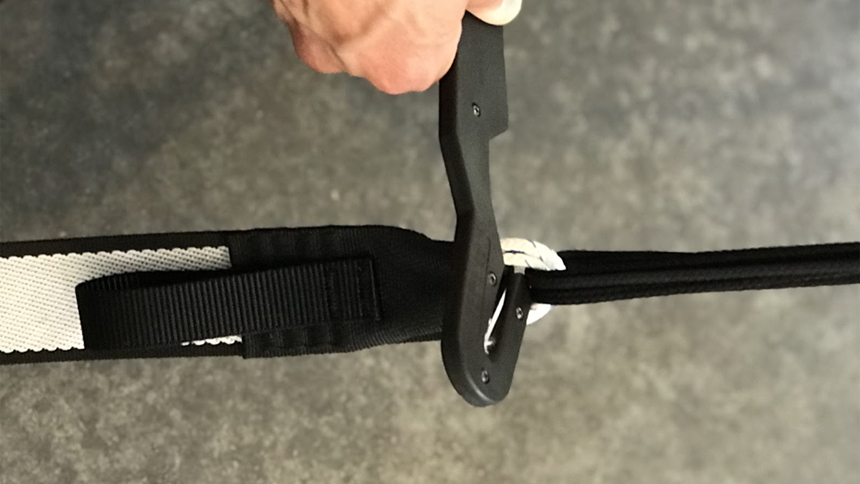
When you add these points together and then start drowning in water, cutting slinks is not obviously a great plan. We doubt that the person who invented this plan was drowning when they thought of it. They were probably warm and dry and thinking mainly about the cost of a new harness.
In an emergency, we think it’s a better idea to cut your risers just above the shoulder, and – if possible – two at a time.
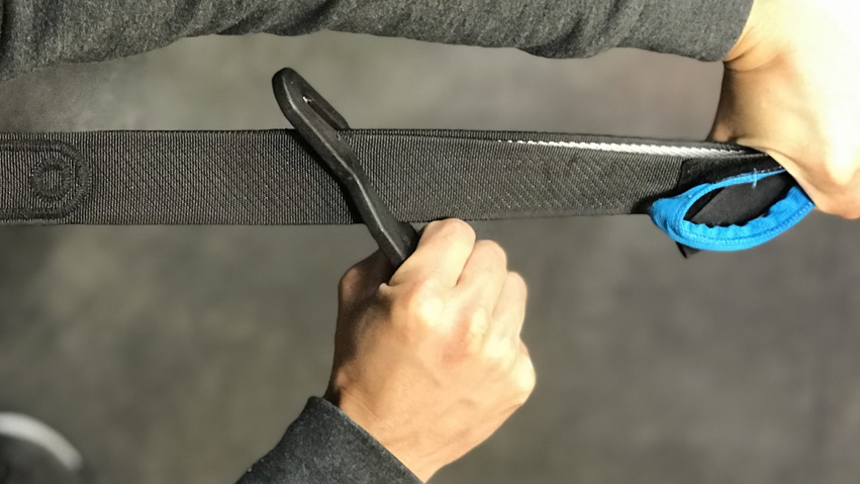
But wait, harnesses are expensive!
If you cut your SQAD risers in an emergency situation, we will replace your harness free of charge. We ask only that you explain to us what happened, and what you learned. The last thing we want is for our friends to let the cost of a harness influence decisions related to safety.
3-Ring Escape
In an emergency you only need to find one handle, and pull it and the canopy is disconnected. As far as escaping goes, 3-Rings win. But, make sure you read this article about 3-rings in base.
Sewn Risers Escape
With sewn risers, you’ll need a hook knife. The question is, what do you cut? There are two options…
i, Hook Knife to Risers:
You have to find three things – one hook knife, and two riser groups. You can cut front and rear risers together on each side, just above your shoulder.
ii, Hook Knife to Slinks:
You have to find five things: one hook knife and four slinks – and they are smaller and more distant targets. Remember, if you miss one slink out of the four, or your hook knife ends up crammed full of Spectra fibers from cutting the other three slinks, you’re still drowning! Don’t forget: if you’re jumping slider up, or without the LRM for slider off, you’ll need to cut those brake lines as well. That brings the total cuts to seven.
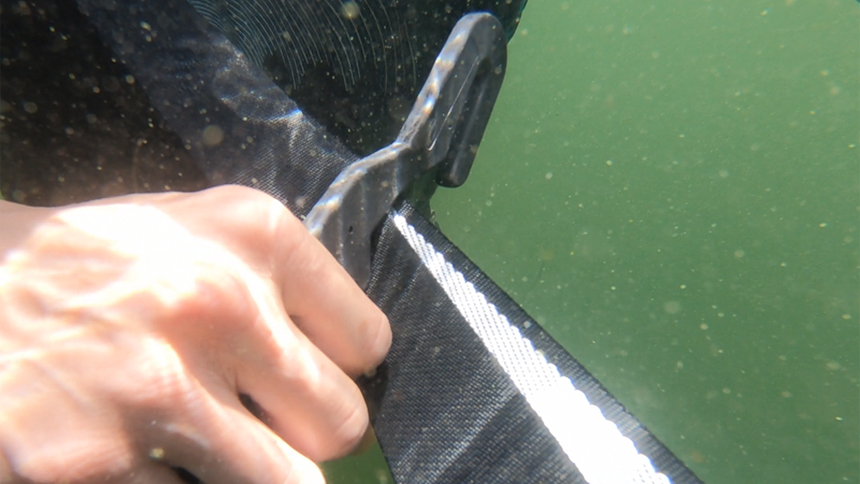
The next issue is that of materials – specifically, your hook knife vs your gear. In the ideal hook-knife scenario above, you’re cutting through two risers at the same time. Your risers will be made from one of two common specs: Type-8 (Nylon) or a Dyneema blend.
Cutting through double layer of either material can be easy to do twice with the same hook knife, or impossible right from the start, depending on the quality of hook knife that you use, and how you use it.
Hopefully, you have a high quality hook knife with a double blade.
Small plastic hook knives, and cheap single-blade designs, might not last long enough for you to get through your second set of risers. Your hook knife should be UNUSED.
If your hook knife has ever been used, or is in anything other than pristine condition, REPLACE IT, or replace the blades if possible.
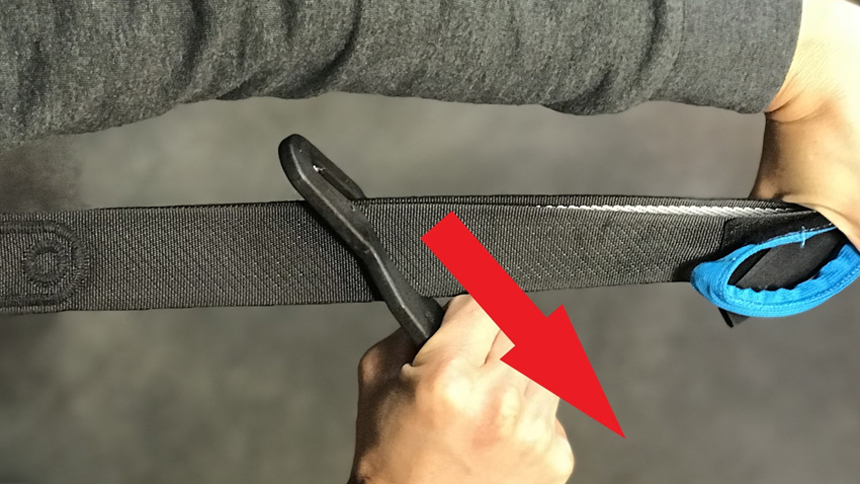
Take your high quality hook knife and cut away from your shoulder in a slightly diagonal direction. By hooking the riser at a diagonal angle, and cutting away from you, natural tension is created. If your risers are loaded and you are being dragged or pulled, the angle is less critical because the risers will be tensioned. But if there is no tension, cutting away at an angle will help. If needed, pull tension on the riser (away from you) with one hand, while cutting away from you with the other hand.
Try to trap both risers at once – the idea is to finish quickly: One hook knife, two riser groups.
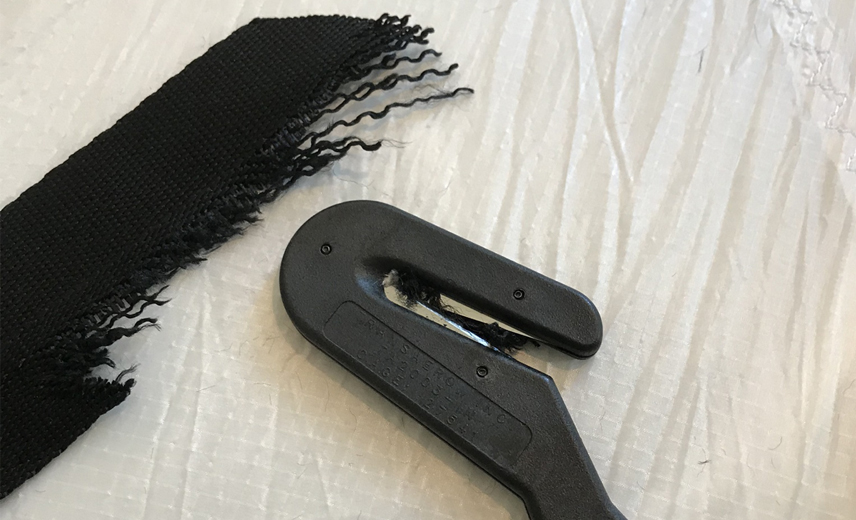
It is worth practicing this technique on the webbing that your harness is made from. If you do so, you will find that hook knives can have a very short lifespan. The blades can become clogged with fibers, they dull quickly in some cases, and cutting the second set of risers can be a struggle even with a brand-new knife.
If your risers are inaccessible (ie, behind you), remember that you have other options. Cutting both leg straps near the buckle will allow you to slide out and downward. Depending on your harness fit, type, and settings, you may also need to cut your chest strap. This brings the total number of actions to four: Find hook knife, cut three straps. But if your risers are inaccessible, it’s a better option than drowning.
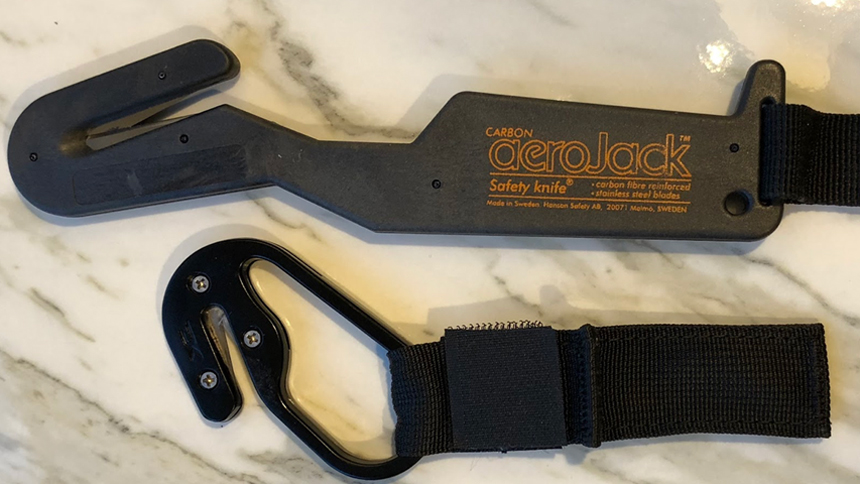
From experience: It is very difficult to cut harness leg straps using a hook knife while treading water. It’s difficult to trap the edge of the webbing, the padding of the leg straps and the doubled back webbing make the “sweet spot” hard to access, and it’s very difficult to see what you are doing without swim goggles. On a harness that fits well, the single-thickness webbing section is hard to get to – it’s mainly hidden by pads and buckle. So, in short, it’s a bad situation. Do what you can to keep your risers in front of you, and accessible, in the case of a water landing.
In case of a forced water landing, try to cut or undo your chest strap while still under canopy.
Never hesitate to cut any part of your harness – if the water is moving or cold, you are in very real danger.
Watch this video for more info …



